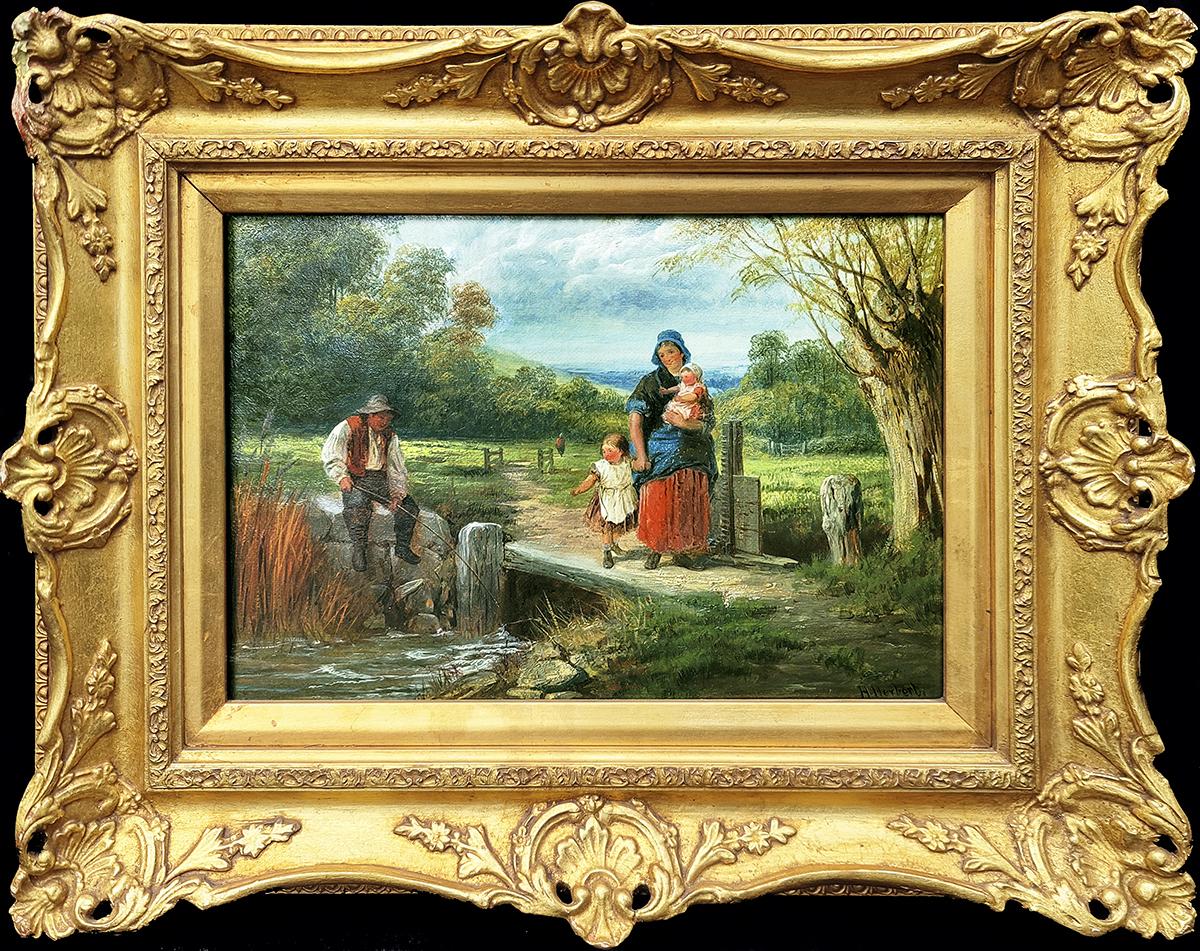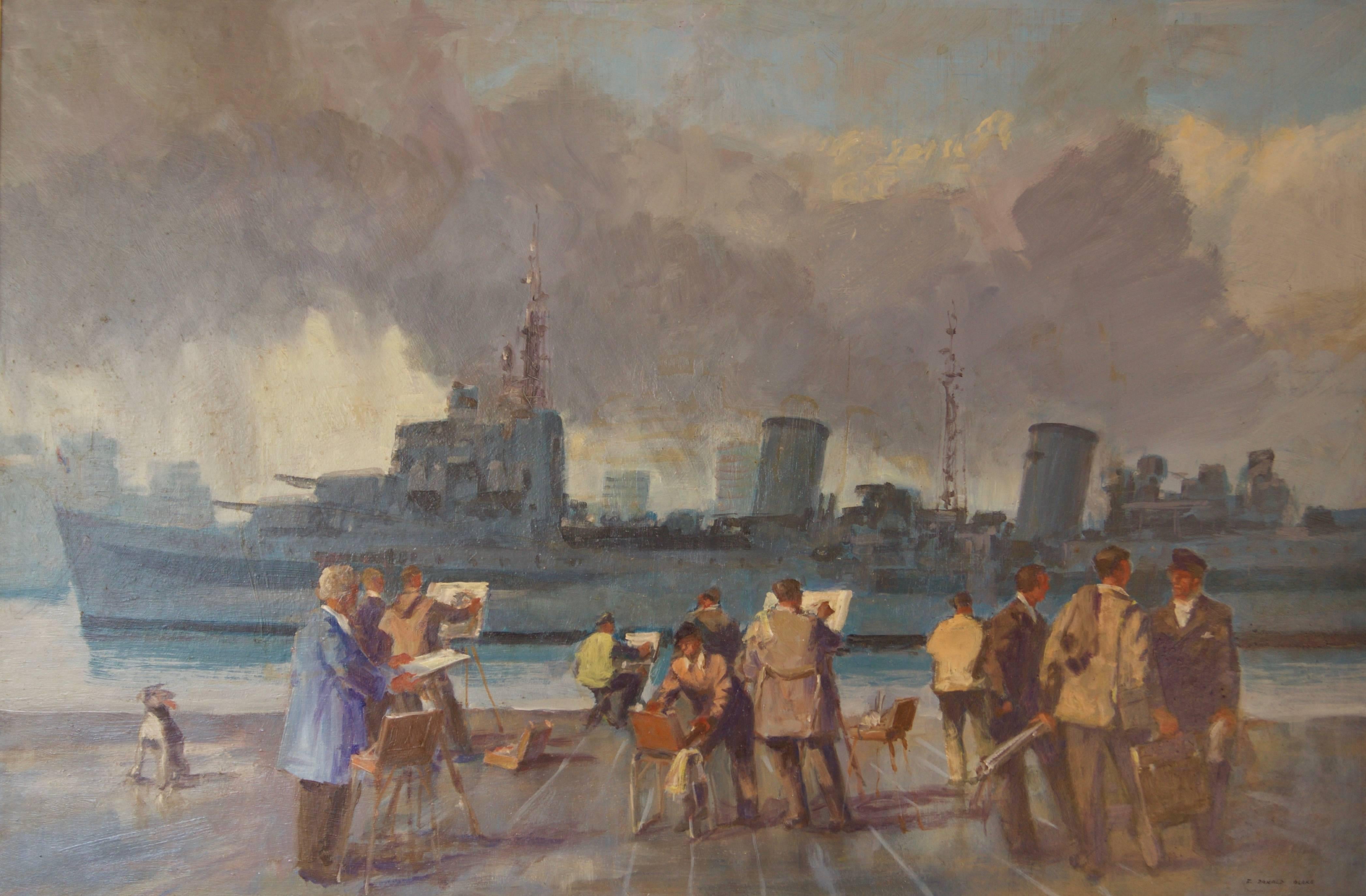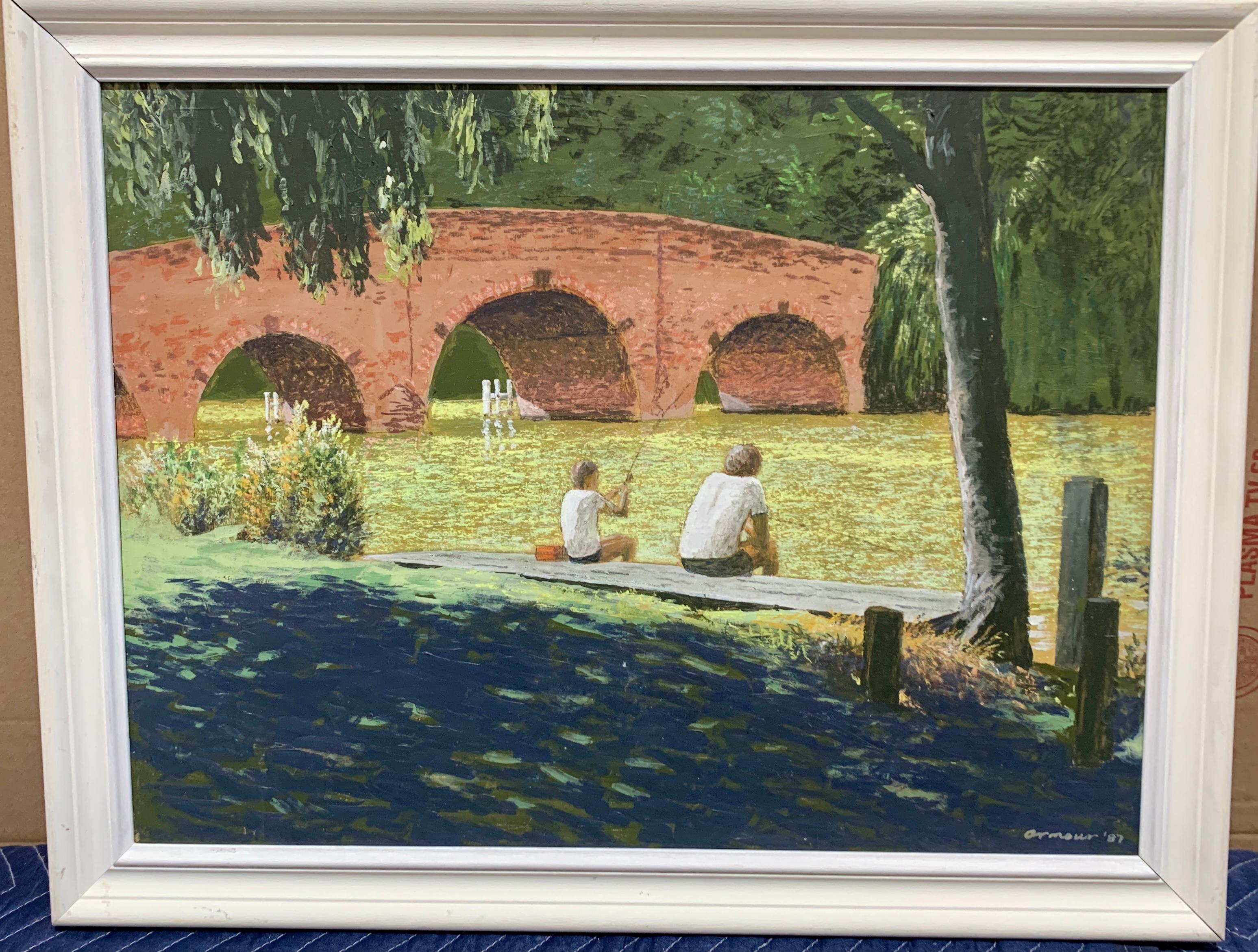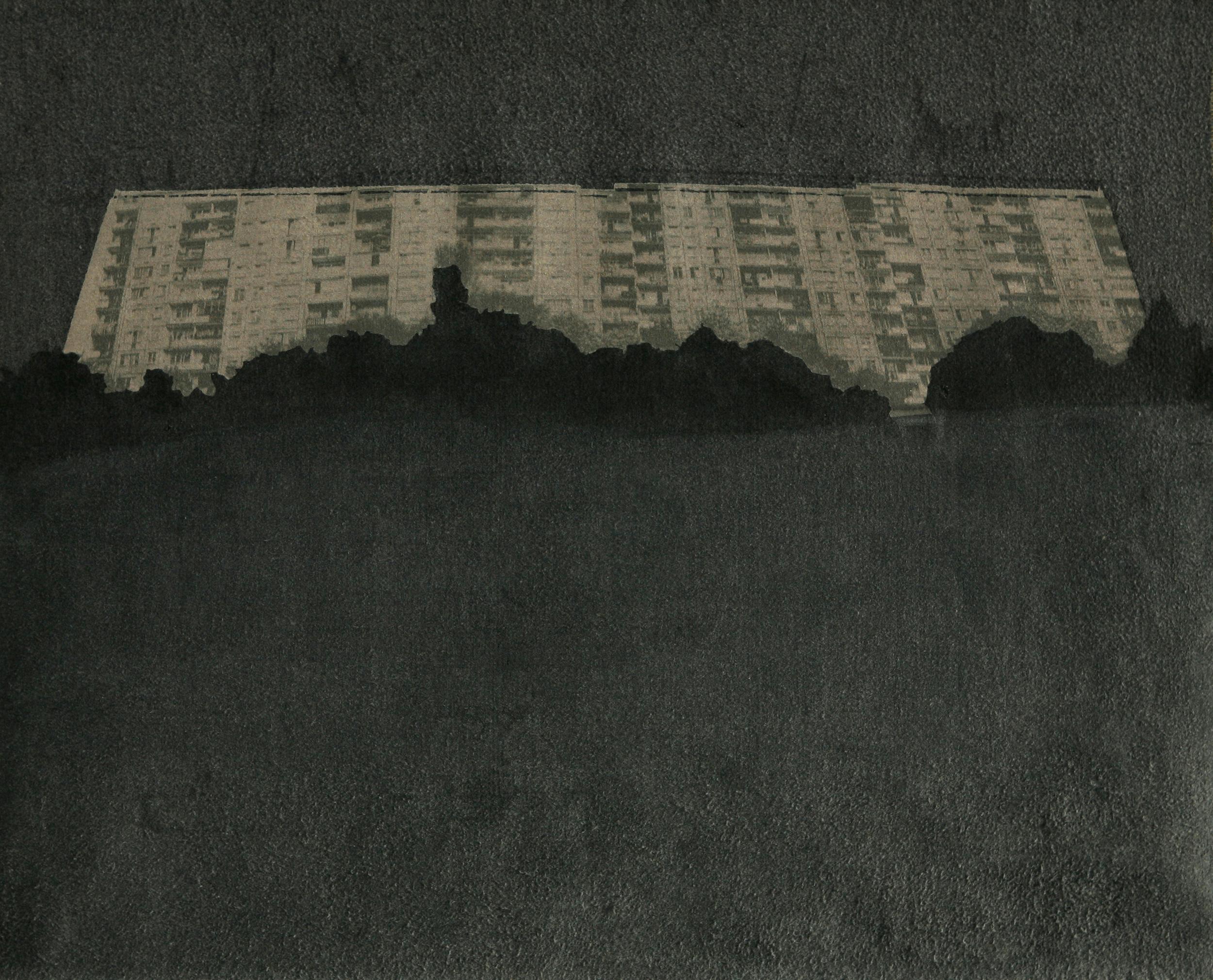Items Similar to Allegory of four elements, pupil of Jan Brueghel the Younger (1601-1678)
Want more images or videos?
Request additional images or videos from the seller
1 of 18
Allegory of four elements, pupil of Jan Brueghel the Younger (1601-1678)
About the Item
17th century Antwerp school
Landscape, animals and stilllife by a pupil of Jan Brueghel the Younger (1601-1678)
Figures by a pupil of Frans Francken II
Oil on canvas: h. 52,5 cm, w. 82 cm (11
Giltwood frame
Framed: h. 66 cm, w. 96 cm
Our magnificent painting has as its subject a theme frequently treated in the 17th century, the allegory of the four elements which make up the universe: air, water, fire and earth.
The elements are personified by four mythological figures gathered in the heart of a lush landscape, each with their own attribute.
Ceres symbolizing agriculture and abundance is seated on the right holding a cornucopia. On the left Amphitrite holds a conch shell from which water and fish flow, Urania holds an armillary sphere, symbolizing air. While Vesta, in profile, with her back turned to the viewer, holds a flaming torch.
The composition is divided in two, the forest landscape and the watercourse lined with reeds flowing into the sea.
This separation is accentuated by the still life of flowers, fruits and vegetables on the right balanced by the artistic dispersion of shells and fish on the left.
Finally, the upper left corner is occupied by the air domain: on the bare branches of a tree the different birds are gathered. Other birds fly over the sky. Two intertwined puttis hover above the waters, one equipped with a torch and the other with an armillary sphere.
In the background in the sea Neptune drives his chariot drawn by sea horses.
Our artist strives to paint the splendors of nature with remarkable realism and works meticulously to make fruits, vegetation, birds and marine animals as real as possible.
All the figures, animals, objects and the landscape thus form an idyllic scene representing in a microcosm the entire universe and by extension divine creation in all its splendor.
Beyond an aesthetic pleasure of contemplating the universe, the artist with an encyclopedic spirit like a naturalist or botanist lists the vegetables and fruits placed at the feet of the goddesses, as well as the different flowers that grow on the right .
Of course, this favorite subject of painters from the beginning of the 17th century required a mastery of several genres: human figures, still life as well as landscape, which explained the intervention of two artists.
Our painting is a collaborative work between two students of Antwerp artists: Jan Brueghel the Younger (the specialist in landscape and still life) and Frans Francken II (figure painter), the masters having worked together on several occasions to depict the theme of four elements, it is obvious that they had to delegate certain increasingly numerous orders to the members of their respective workshops.
For the allegories of the four elements executed jointly by Jan Brueghel the Younger and Frans Francken II see below:
Related works:
• Sotheby's (London (England)) 2014-07-10, 51 x 65 cm, oil on canvas, Jan Brueghel the Youngher & Frans Francken II
• Getty Museum, Los Angeles, Jan Brueghel the Younger & Frans Francken II, oil on panel 52,7 x 81,3 cm (inv 71.PB.28), 1635
• Schwerin Staatliches Museum, workshop of Frans Francken II, oil on panel (31x42 cm) (the figures on this painting are very similar to our work)
• Auction house Sophie Himbaut, Aix en Provence, 19/03/2021, oil on panel, 55 x 75 cm, Jan Brueghel the Younger and pupil of Frans Francken II
The first known painting dealing with the theme of the “four elements” by Jan Brueghel the Elder was painted in 1604 for Rudolph, Holy Roman Emperor (kept at the Kunsthistorisches Museum in Vienna, inv GG815).
This work provided the impetus for a great tradition of the theme of the four elements in Antwerp painting, painted mainly by Jan Brueghel the Younger, sometimes divided into four independent works for each element.
This methodical organization is reminiscent of the context of wunderkammers (cabinets of curiosities) and the rise of collecting in the 17th century.
According to a theory which indicates that all materials present on our globe are reducible to four elements: earth, water, air and fire. This theory, amply described by the Greek philosopher Aristotle, was abandoned during the 18th century following progress in chemistry.
- Dimensions:Height: 25.6 in (65.03 cm)Width: 37.8 in (96.02 cm)
- Medium:
- Movement & Style:
- Circle Of:Jan Brueghel the Younger (1601 - 1678, Flemish)
- Period:Mid-17th Century
- Condition:
- Gallery Location:PARIS, FR
- Reference Number:1stDibs: LU2433214081532
About the Seller
No Reviews Yet
Vetted Seller
These experienced sellers undergo a comprehensive evaluation by our team of in-house experts.
1stDibs seller since 2023
- ShippingRetrieving quote...Ships From: PARIS, France
- Return PolicyA return for this item may be initiated within 3 days of delivery.
More From This SellerView All
- Louis XIV and his army at the crossing of the Rhine by Adam-Frans van der MeulenBy Adam Frans van der MeulenLocated in PARIS, FRAdam-Frans van der Meulen (Bruxelles, 1632 - Paris, 1690) Louis XIV and his army at the crossing of the Rhine 12 June 1672 Signed A.F VANDERMEULEN at the right low corner Oil on can...Category
1670s Old Masters Landscape Paintings
MaterialsCanvas, Oil
- A 17th c. Italian school, Capriccio with the Colosseum, circle of V. CodazziLocated in PARIS, FRA capriccio with the Colosseum in Roma 17th century Italian school Circle of Viviano Codazzi (1604-1670) Oil on canvas Dimensions: h. 35.43 in, w. 51.18 in Modern 17th century style ...Category
17th Century Old Masters Landscape Paintings
MaterialsCanvas, Oil
- Adam and Eve in paradise, studio of Jan Brueghel the Younger, 17th centuryLocated in PARIS, FRStudio of Jan Brueghel the Younger 17th century Antwerp school Oil on oak panel, h. 37 cm, w. 49 cm Tortoiseshell veneered baroque style frame...Category
Mid-17th Century Old Masters Figurative Paintings
MaterialsOil, Wood Panel
- The Triumph of the Infant Bacchus, workshop of H. Van Balen, 16th c. AntwerpBy Hendrick van BalenLocated in PARIS, FRThe Triumph of the Infant Bacchus, Workshop of Hendrick Van Balen (1575-1632) Antwerp, c.1630 Oil on copper, h. 28 cm (11.02 in), w. 35 cm (13.78 in) A large Roman 17th century golden painted frame Framed: h. 52 cm (20.47 in.), w. 58 cm (22.83 in) Our finely painted work depicts The Triumph of the Bacchus as a young boy and is one of the most popular mythological subjects in Antwerp at the beginning of the 17th century. Feasting, wine and fun are the themes that constantly appeal to the public. Thus unfolds before our eyes on our painting the procession composed of nymphs, baccantes, fauns, satyrs and children, their bodies naked, partially covered with brightly coloured draperies that help to brighten up the parade. Playing various instruments, dancing and drinking, while carrying vases and poles adorned with grapevines, participants to the rhythm of a noisy brass band make their way to an ancient temple standing on the right. The exaggerated gestures convey to us the frenzy of the excited crowd. The Child Bacchus follows the joyous procession, carried by satyrs and nymphs, crowned with ivy and joyfully raising a cup of wine. In the foreground, the drunken participants leave the procession, the children on the left and the group of bacchantes and satyrs on the right are resting among various objects scattered at their feet: cups, vases, ewers bear witness to the festivities in progress. In the background, a hilly landscape stretches out on the horizon, a semblance of calm that contrasts with the bustle of the foreground. The artist strives to multiply the many details, whether it be figures, costumes, flowers or vegetation, in order to demonstrate his know-how and the perfection of his execution. The acidulous palette with fresh and varied colours is characteristic of Hendrick Van Balen's works. There are several versions identical to ours with similar dimensions painted by Hendrick Van Balen and his workshop. Related works: • Koller Auction, Zurich, 21/09/2007, oil on copper, 28,5 x 37,4 cm. • Staatliche Kunsthalle, Karlsruhe, Inv. N° 809 (oil on copper, 40 x 53,5 cm) • Auktionshaus für Altertümer Glückselig, Vienne, 10/05/1932, ( oil on copper, 34 x 42 cm) • Gemäldegalerie of Pommersfelden, Schloss Weissenstein, oil on panel, 47 x 64 cm Hendrick Van Balen, Flemish painter, born and died in Antwerp (1575-1632). A pupil of Adam Van Noort, he entered the Guild of St. Luke in 1593, later trained in Italy and was Van Dyck's first teacher. He often painted small figures taken from scenes from the Bible or classical mythology, on paintings whose backgrounds and landscapes were painted by Josse de Momper...Category
17th Century Old Masters Figurative Paintings
MaterialsCopper
- 17th c. Flemish - Landscape with Flight to Egypt - Antwerp circa 1630Located in PARIS, FRLANDSCAPE WITH FLIGHT TO EGYPT, JASPER VAN DER LANEN (ANTWERP, 1585 - 1634) 17TH CENTURY FLEMISH SCHOOL ANTWERP CIRCA 1630 Oil on copper, dimensions: h. 10.23 in, w. 14.96 in Flemish style frame in ebonized wood adorned with wavy moldings and wood veneer. Framed dimensions: h. 17.32 in, w. 21.65 in Provenance: Philips auction...Category
Early 17th Century Old Masters Figurative Paintings
MaterialsCopper
- Ascension Day in Venice, Louis de Caullery (1582-1621), Flemish 17th centuryLocated in PARIS, FRAscension Day in Venice 17th century Antwerp School Attributed to Louis de Caullery (1582-1621) Oil on oak panel Dimensions: h. 19.68 in, w. 34.25 in Flemish style frame in ebonized ...Category
Early 17th Century Old Masters Landscape Paintings
MaterialsOil, Wood Panel
You May Also Like
- Fishing in the StreamLocated in Belgravia, London, LondonOil on canvas Canvas size: 8.5 x 12 inches Framed size: 13.75 x 17.25 inches Signed lower rightCategory
19th Century Figurative Photography
MaterialsCanvas, Oil
- Wapping Group of Artists by the Thames - Mid 20th Century Oil by Donald BlakeBy Frederick Donald BlakeLocated in Watford, HertfordshireWapping Group of Artists by the Thames - Mid 20th Century Oil by Donald Blake Frederick Donald Blake Born in Greenock, Scotland in 1908 and died in 1997...Category
1950s Post-Impressionist Landscape Paintings
MaterialsOil, Canvas
- Modern British 20th century River landscape, On the Thames at SonningLocated in Woodbury, CTWell painted and very decorative Modern British view on the Thames at Sonning Bridge. The artist was a local person living and painting in the area of Sonning. He painted along the...Category
1990s Impressionist Landscape Paintings
MaterialsOil, Board
- Venice Oil cm. 55 x 60 1999By Georgij MorozLocated in Torino, ITVenice Russian Art Landscape with gondolas in Venice Georgij MOROZ (Dneprodzerzinsk, Ucraina, 1937 - St. Petersburg, 2015) MUSEUMS Moscow, Tret’jakov Gallery Moscow, USSR Artists Col...Category
1990s Impressionist Landscape Paintings
MaterialsOil
- Untitled, Block, Series Stand - Contemporary Photography - Painting ObjectBy Magdalena PeszkowskaLocated in Salzburg, ATIndividual technique on grey military blanket Magdalena Peszkowska born in 1980 in Gdańsk, Poland. Studied in Department of Painting at Academy of F...Category
2010s Contemporary Landscape Paintings
MaterialsTextile, Mixed Media, Acrylic, Monoprint, Other Medium
- A WolfLocated in New York, NYProvenance: The Marchesi Strozzi, Palazzo Strozzi, Florence Sale, Christie’s, London, May 20, 1993, lot 315, as by Carl Borromaus Andreas Ruthart...Category
17th Century Old Masters Animal Paintings
MaterialsCanvas, Paper, Oil




